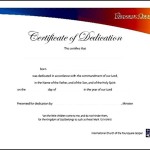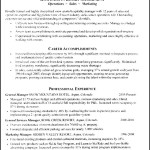Design Sprint Agenda Planner
Crafting a Killer Design Sprint Agenda: A Detailed Guide
A Design Sprint is a focused, five-day process for rapidly solving design challenges, prototyping ideas, and testing them with users. Its success hinges on meticulous planning, especially the agenda. A well-defined agenda ensures everyone stays on track, maximizes productivity, and achieves the sprint’s goals. This guide offers a detailed look at structuring a powerful Design Sprint agenda.
Understanding the Core Principles
Before diving into the daily breakdown, remember these foundational principles:
- Timeboxing: Allocate specific time slots for each activity and stick to them rigorously. Time constraints foster focus and decisiveness.
- Facilitator as Timekeeper: The facilitator’s role includes enforcing the agenda and keeping the team on schedule. Gentle but firm reminders are crucial.
- Decision-Making Process: Predefine how decisions will be made. Voting, dot voting, or expert opinion can be employed. Clarity eliminates roadblocks.
- Breaks: Schedule frequent short breaks (5-10 minutes every hour) and longer lunch breaks. Rested minds are more creative and productive.
- Materials Preparation: Ensure all necessary materials (whiteboards, sticky notes, markers, prototyping tools) are readily available before each day starts.
The Five-Day Agenda Breakdown
Day 1: Understand (Mapping the Problem)
The goal of Day 1 is to clearly define the challenge and set the stage for the rest of the sprint.
- Morning (9:00 AM – 12:00 PM):
- Welcome and Introductions (30 mins): Kick off with a brief overview of the Design Sprint process, roles, and goals. Have each team member introduce themselves and their relevant expertise.
- Sprint Goal Definition (60 mins): Define the long-term goal – what do you hope to achieve in the next six months, a year, or longer? Write it in an aspirational but realistic manner. (e.g., “Increase user engagement with our mobile app”).
- Sprint Questions (60 mins): Frame the challenge as a set of questions you want to answer during the sprint. These are framed as questions that could derail your progress if not addressed. (e.g., “Will users understand the new feature?”).
- Map the Problem (60 mins): Create a customer journey map, visualizing the user’s experience from initial contact to achieving their desired outcome. Identify key pain points and opportunities. Focus on a specific segment or persona to keep the scope manageable.
- Afternoon (1:00 PM – 5:00 PM):
- Ask the Experts (90 mins): Invite subject matter experts to share their knowledge and insights on the problem. Encourage questions and open discussion. Record the session for future reference.
- How Might We (HMW) Notes (60 mins): Transform the problems identified in the map into “How Might We” questions. This reframing fosters a solution-oriented mindset. Write each HMW on a separate sticky note.
- Organize and Prioritize HMWs (90 mins): Group similar HMWs and then vote on the most important or impactful ones to focus on. This narrows the scope to the most critical areas.
Day 2: Sketch (Exploring Solutions)
Day 2 is about generating a wide range of potential solutions through sketching and brainstorming.
- Morning (9:00 AM – 12:00 PM):
- Lightning Demos (60 mins): Each team member researches and presents inspiring examples of solutions from other products, industries, or even unrelated fields. This provides a diverse range of ideas to build upon.
- Sketching Warm-Up (30 mins): A quick exercise to loosen up and get creative juices flowing. Examples include Crazy 8s (sketching eight different ideas in eight minutes).
- Note Taking (30 mins): Review the insights from Day 1 and the Lightning Demos, taking notes and capturing key ideas.
- Afternoon (1:00 PM – 5:00 PM):
- Solution Sketching (3 hours): Each team member independently develops a detailed solution sketch. This should include:
- Four-Step Sketch: Notes, Ideas, Crazy 8s, Solution Sketch (detailed).
- Focus on visual representations and clear descriptions.
- Solution Sketching (3 hours): Each team member independently develops a detailed solution sketch. This should include:
Day 3: Decide (Choosing the Best Solution)
Day 3 focuses on objectively evaluating the sketches and selecting the best solution to prototype.
- Morning (9:00 AM – 12:00 PM):
- Art Museum (30 mins): Display all the solution sketches on a wall, creating an “art museum” for everyone to view.
- Heat Map Voting (30 mins): Each team member places dot stickers on the parts of the sketches they find most promising.
- Speed Critique (60 mins): Each sketch is briefly presented and critiqued, highlighting its strengths and weaknesses. The facilitator leads the discussion and keeps it concise.
- Afternoon (1:00 PM – 5:00 PM):
- Straw Poll (30 mins): Silently choose one or two top solutions. This helps to narrow the focus.
- Supervote (60 mins): The Decider (typically the project owner) gets a limited number of “supervotes” to use on the features or solutions they believe are most crucial.
- Storyboard (2.5 hours): Create a step-by-step visual narrative of the user interacting with the chosen solution. This provides a clear roadmap for the prototype.
Day 4: Prototype (Making it Real)
Day 4 is dedicated to building a realistic prototype of the chosen solution. Focus on creating a facade that users can interact with, rather than a fully functional product.
- Full Day (9:00 AM – 5:00 PM):
- Divide and Conquer: Assign roles and tasks to team members (e.g., content creator, interaction designer, visual designer, stitcher).
- Prototype Creation: Focus on the user interface and key interactions. Use tools like Figma, Sketch, InVision, or even low-fidelity methods like paper prototyping.
- Emphasis on Realism: The prototype should look and feel as close to the real product as possible within the given timeframe.
Day 5: Test (Learning from Users)
Day 5 is about testing the prototype with real users and gathering valuable feedback.
- Morning (9:00 AM – 12:00 PM):
- Recruit and Prepare Interviewers: Brief interviewers on the testing protocol and ensure they are comfortable conducting user interviews.
- Set Up Testing Environment: Create a comfortable and distraction-free environment for testing.
- Dry Run: Conduct a practice interview to refine the testing process.
- Afternoon (1:00 PM – 5:00 PM):
- User Testing (3 hours): Conduct one-on-one user interviews. Observe user behavior and gather feedback on the prototype. Aim for at least five interviews.
- Pattern Recognition and Reporting (1 hour): The team analyzes the user feedback, identifies patterns and insights, and prepares a report summarizing the key findings.
Tips for Agenda Optimization
- Tailor the Agenda: Adapt the agenda to the specific project and team. You might need to adjust the time allocation for certain activities based on complexity.
- Communicate Clearly: Ensure everyone understands the agenda and the goals for each day.
- Flexibility is Key: Be prepared to adjust the agenda if unexpected issues arise or if the team needs more time on a particular activity.
- Retrospective: At the end of the sprint, conduct a brief retrospective to identify what worked well and what could be improved for future sprints.
Design Sprint Agenda Planner :
Design Sprint Agenda Planner was posted in October 31, 2025 at 2:08 pm. If you wanna have it as yours, please click the Pictures and you will go to click right mouse then Save Image As and Click Save and download the Design Sprint Agenda Planner Picture.. Don’t forget to share this picture with others via Facebook, Twitter, Pinterest or other social medias! we do hope you'll get inspired by SampleTemplates123... Thanks again! If you have any DMCA issues on this post, please contact us!



